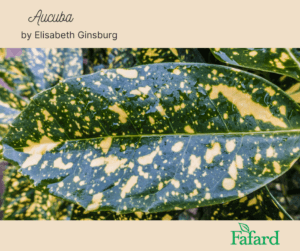
We gardeners are always wondering what to do with shade, especially dry shade. Plants that have to survive on partial sunlight and perpetual competition from thirsty tree roots will often just fold up their leaves and die. Needless to say, that is not a good look.
But all is not hopeless in the shady corners of gardens, yards and patios everywhere. Aucuba japonica or spotted laurel is a plant that can save the day, whether it is used as a hedge, the anchor of a mixed perennial and shrub layout, or even as a large container-grown subject.
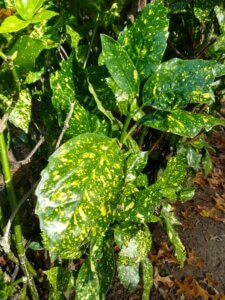
Native to China, Taiwan and Japan, as the Latin name suggests, aucuba is a broadleaf evergreen with a naturally rounded shape, and glossy, green elliptical leaves that may be as much as eight inches long. You can keep the shrubs trimmed to just about any size, but left to their own devices, they may grow between six and ten feet tall, and five to nine feet wide. Hardy in USDA plant hardiness zones 6b through 9, aucubas are not fussy about soil, except for distaste for wet sites. If your soil tends towards moisture-retentive clay, add an equal measure of a good quality organic amendment, like Fafard® Premium Natural and Organic Compost, to the soil when you plant.
Many sources suggest protection from cold winds at the north ends of the aucuba hardiness range, but otherwise the shrubs are generally pretty tough. Once established they shrug off moderate drought, as well as air pollution.
Shade is aucuba’s friend, and, in fact, too much sunshine is likely to burn the young leaves.
Like hollies and some other evergreens, aucuba is dioecious, meaning that fruit production requires both male and female plants. The shrubs flower in spring, with clusters of small purple blooms that appear in the leaf axils of female plants, and in panicles or upright flowerheads on male specimens. When pollinated, the female flowers develop gradually into bright red berries that shine in the fall and often persist on the plants into the winter months.
The red fruits certainly add to the ornamental value of aucuba, but if you are buying the plant strictly for foliage, either male or female shrubs will do the job equally well.
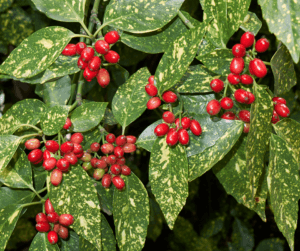
The first time I spotted an aucuba in a nursery, it bore the characteristic glossy green leaves, but those leaves were dashed, dotted and splotched with yellow. The shrub was probably the ‘Variegata’ variety, which has long been popular and has earned aucuba another nickname—“gold dust shrub”. Nurseries and online vendors may also carry others, including ‘Marmorata’, which also features yellow variegation on a shrub that grows seven feet tall, but only three feet wide. The berries on female specimens are reputedly larger than those of other varieties.
For smaller gardens or containers, try ‘Rozannie’, which grows only three feet tall and wide, in an appealing, rounded configuration. In areas north of USDA plant hardiness zone 6b, where winters are too cold for aucubas, potted ‘Rozannie’ shrubs can also be overwintered indoors. The foliage is solid green, with the same glossy sheen that is present on other aucubas. ‘Rozannie’ has the added allure of being able to produce berries without the assistance of a male plant, another plus in locations where space is limited.
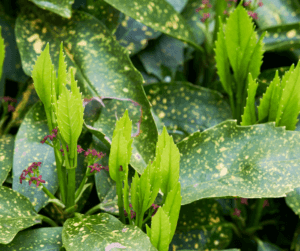
Aucubas work well when combined with other shade lovers. Surround them with spring-flowering daffodils interplanted with interesting hosta varieties for a great display that will take you from spring through summer. Groundcovers like ajuga (Ajuga reptans) or lamium (Lamium maculatum) are also highly complementary, as are any of the many colorful coral bells (Heuchera) varieties that are widely available.
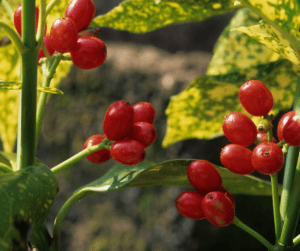
Shade may sometimes seem like a challenge, but shrubs like aucuba mean that it will never be boring.

